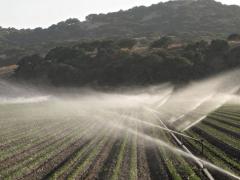Phosphorus demand for the 1970–2100 period: A scenario analysis of resource depletion
The phosphorus (P) cycle has been significantly altered by human activities. For this paper, we explored the sustainability of current P flows in terms of resource depletion and the ultimate fate of these flows.
The analysis shows that rapid depletion of extractable phosphate rock is not very likely, in the near term. Under best estimates, depletion would be around 20–35%. In worst case scenarios, about 40–60% of the current resource base would be extracted by 2100. At the same time, production will concentrate in Asia, Africa and West Asia, and production costs will likely have increased. As there are no substitutes for phosphorus plant nutrients in agriculture, arguably even partial depletion of P resources may in the long run be relevant for the sustainability of agriculture. Consumption trends lead to large flows of phosphorus to surface water and a considerable build-up of phosphorus in agricultural soils in arable lands. This may allow a reduction in future P fertiliser application rates in crop production. Results also indicate a global depletion of P pools in soils under grassland, which may be a threat to ruminant production.
Authors
Specifications
- Publication title
- Phosphorus demand for the 1970–2100 period: A scenario analysis of resource depletion
- Publication date
- 2 August 2010
- Publication type
- Publication
- Magazine
- Global Environmental Change. Volume 20, Issue 3: 428-439
- Product number
- 92516




